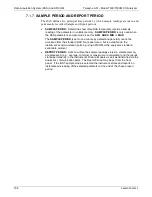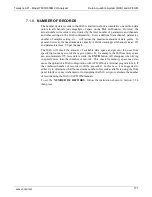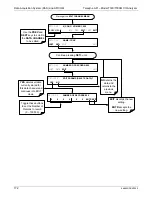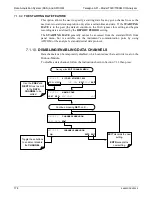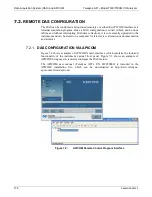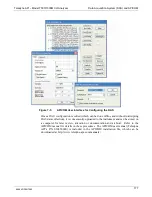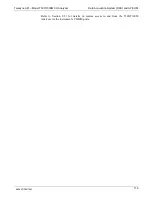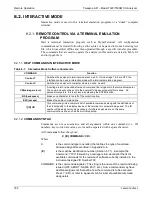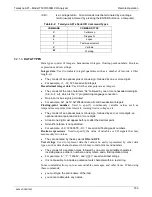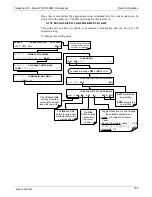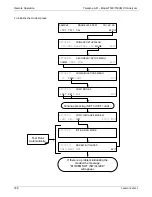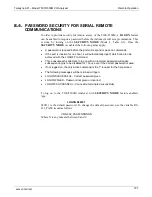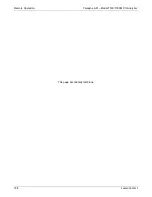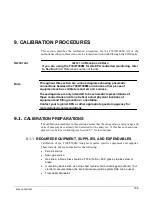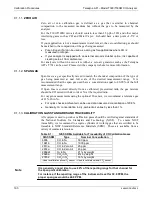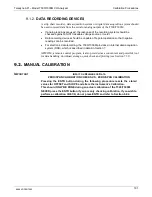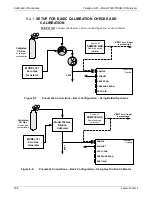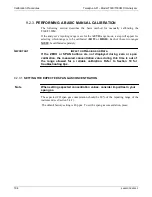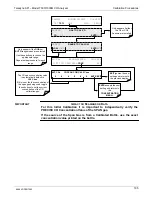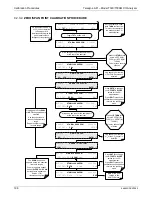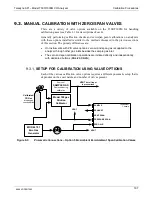
Remote Operation
Teledyne API – Model T300/T300M CO Analyzer
182
8.2.
INTERACTIVE MODE
Interactive mode is used with a terminal emulation programs or a “dumb” computer
terminal.
8.2.1.
REMOTE CONTROL VIA A TERMINAL EMULATION
PROGRAM
Start a terminal emulation program such as HyperTerminal. All configuration
commands must be created following a strict syntax or be pasted in from an existing text
file, which was edited offline and then uploaded through a specific transfer procedure.
The commands that are used to operate the analyzer in this mode are listed in Table 8-1
and in Appendix A.
8.2.1.1.
HELP COMMANDS IN INTERACTIVE MODE
Table 8-1: Interactive Mode Software Commands
COMMAND
Function
Control-T
Switches the analyzer to terminal mode (echo, edit). If mode flags 1 & 2 are OFF, the
interface can be used in interactive mode with a terminal emulation program.
Control-C
Switches the analyzer to computer mode (no echo, no edit).
CR(carriage return)
A carriage return is required after each command line is typed into the terminal/computer.
The command will not be sent to the analyzer to be executed until this is done. On
personal computers, this is achieved by pressing the ENTER button.
BS (backspace)
Erases one character to the left of the cursor location.
ESC(escape)
Erases the entire command line.
?[ID] CR
This command prints a complete list of available commands along with the definitions of
their functionality to the display device of the terminal or computer being used. The ID
number of the analyzer is only necessary if multiple analyzers are on the same
communications line, such as the multi-drop setup.
8.2.1.2.
COMMAND SYNTAX
Commands are not case-sensitive and all arguments within one command (i.e. ID
numbers, key words, data values, etc.) must be separated with a space character.
All Commands follow the syntax:
X [ID] COMMAND <CR>
Where
X
is the command type (one letter) that defines the type of command.
Allowed designators are listed in Appendix A-6.
[ID]
is the machine identification number (Section 5.7.1). Example: the
Command “? 700” followed by a carriage return would print the list of
available commands for the revision of software currently installed in the
instrument assigned ID Number 700.
COMMAND is the command designator: This string is the name of the command being
issued (LIST, ABORT, NAME, EXIT, etc.). Some commands may have
additional arguments that define how the command is to be executed.
Press ? <CR> or refer to Appendix A-6 for a list of available command
designators.
06864D DCN7562
Summary of Contents for T300
Page 2: ......
Page 182: ...06864D DCN7562 ...
Page 227: ...225 This page intentionally left blank 06864D DCN7562 ...
Page 228: ...06864D DCN7562 ...

